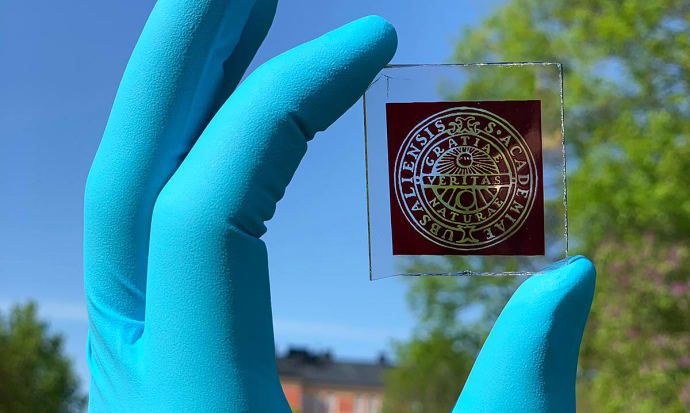A research team from Sweden’s Uppsala University and Germany’s Technical University of Munich has developed a new organic dye-sensitized solar cell with efficiencies reportedly ranging from 31.4% to 34%.
The new device, described as an ambient light harvester, was conceived for use in self-powered ‘internet of things’ devices. The cell, based on a copper iodide-complex called copper(II/I), was manufactured through a new co-sensitization strategy.
The copper iodide electrolyte was vacuum-injected through a hole in the counter electrode, which is an electrode traditionally used to close the current circuit in an electrochemical cell. This electrode was then sealed with thermoplastic film and a glass coverslip, in a ‘sandwich-like layout’, and the cell was left to dry in an ambient atmosphere for 72–96 hours.
The performance of the device was measured under ambient lighting with an OSRAM 930 18 W fluorescent tube. The researcher said the cell generated 103.1 microwatts per square centimeter (μW cm−2), corresponding to a 34.0% power conversion efficiency, which they claim is the highest for any organic dye-sensitized PV device of this kind. For comparison, conventional dye-sensitized solar cells have achieved efficiencies ranging from 10% to 14, though these are achieved on cells with much larger surface areas.
At lower light intensities, the proposed cell generated 49.5 and 19.0 μW cm−2 and achieved efficiencies of 32.7% and 31.4%, respectively. “The dye-sensitized solar cell showed stable power outputs beyond evaporation of the electrolyte,” the scientists said.
The solar cell, described in the paper Dye-sensitized solar cells under ambient light powering machine learning: towards autonomous smart sensors for the internet of things, published in Chemical Science, was tested in a prototype of a fully self-powered intelligent internet of things node inferring information based on a pre-trained artificial neural network.
The researchers claim the cell is able to provide enough electricity from ambient light to power a node capable of sensing and communicating data within a wireless network even during long period of darkness. A paper published last year by Massachusetts Institute of Technology estimates the market for such devices could surpass $1 billion annually by the mid-2020s.






